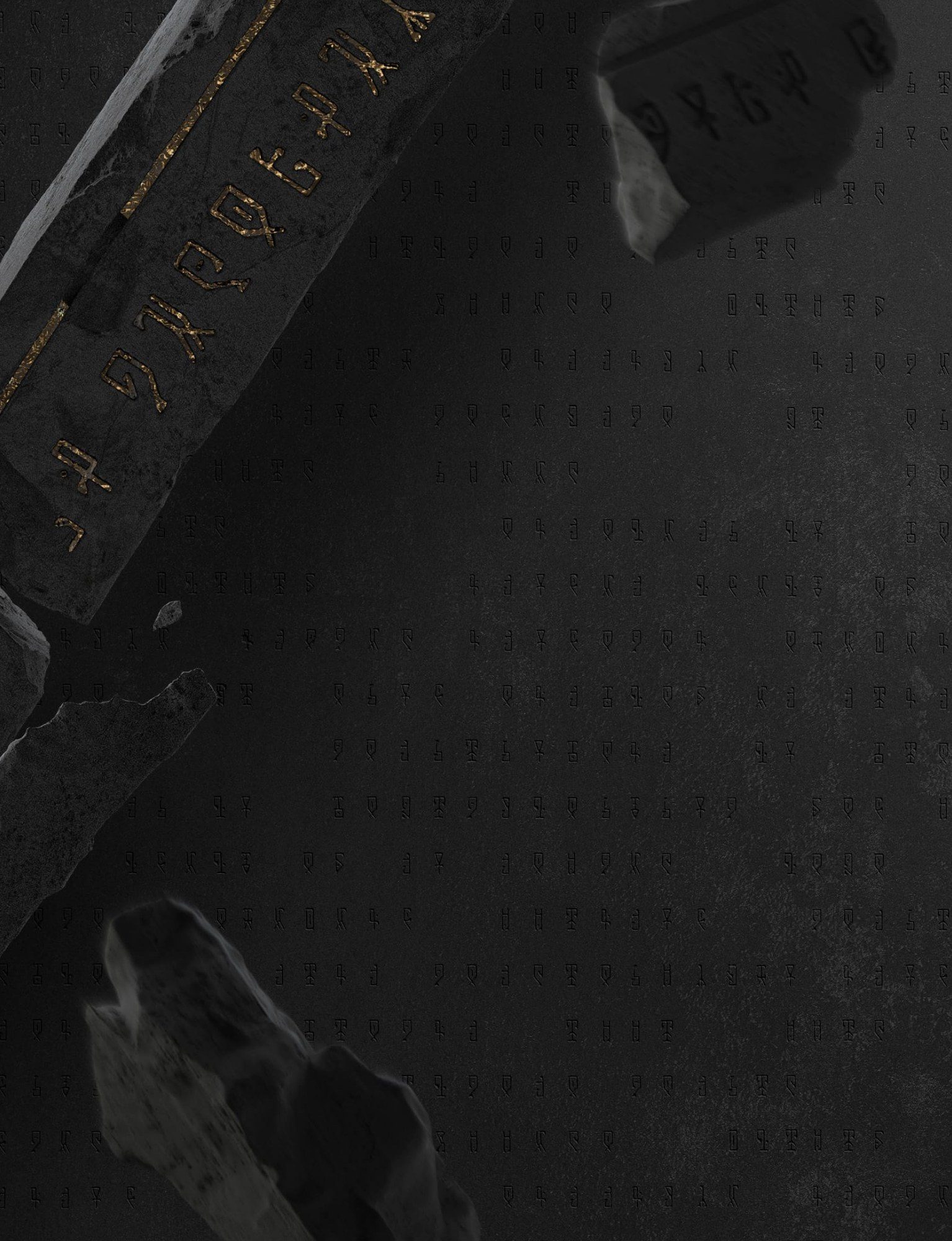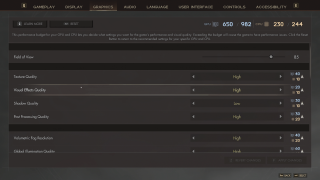
Immortals of Aveum™: UE5.1, PC Optimization, & More
Immortals of Aveum

The day is almost here. The release of Immortals of Aveum™ is just around the corner, and we here at Ascendant Studios are so incredibly excited for players to get to experience what we’ve been building all this time. As we inch closer to August 22nd, we wanted to take a moment to talk a bit more about the technology that’s powering our game, and what that means for PC players in particular.
Earlier this year, we talked about some of the amazing tools we’ve had at our disposal as one of the first studios to release a AAA game using Unreal Engine 5.1. There’s Nanite, for example, which automatically adjusts the details the player sees based on distance, letting us build huge, detailed 3D objects that look every bit as good up close as they do from virtual miles away. The additional surface detail of our objects provide significantly more places for lighting to bounce off of.
No “pop-in” here! No matter the player’s distance from an object, Nanite ensures it’ll always be there, looking great.
We also make extensive use of Lumen, which lets us add incredibly realistic-looking dynamic lighting to those more detailed Nanite objects, which interacts with lighting far better than before, resulting in prettier environments. And it lets us do so dramatically more quickly than before: In Unreal 4, we’d have to balance dynamic lights with “baked in” lighting for any area, a process that would take literal hours to complete. Lumen lets us light things pretty much instantly—with lighting effects that look fantastic.
This is how quickly Lumen lets us enable and disable lighting. And that lighting looks better than what hours of work would have done in the past.
There’s also Niagara, which lets us easily implement and modify graphical effects like fire, smoke and magic. Thanks to Niagara, we don’t have to build each and every effect separately; we can take an existing effect that’s used widely across the game world and modify it for different scenarios so it looks different each time – something that wasn’t possible before.
Niagara lets us tweak effects rather than having to build new ones each time.
And these are just some of the more visually noticeable features; Unreal 5.1 also features tools that make things work more smoothly behind the scenes. Streaming Virtual Texturing, for example, essentially reduces the memory required to show large, detailed textures to the player. The One File Per Actor system lets our team all work in a single environment simultaneously, rather than requiring us to “check out” a whole level to make the smallest of tweaks. And World Partition intelligently loads and unloads bits of the world as needed, allowing us to create enormous environments that don't slow the game to a crawl, make load screens necessary, and/or incinerate anyone’s video cards.
The thing about all these different tools, though, is that no single one of them is responsible for making Immortals of Aveum look as good as it does while running as well as it does. The magic isn’t just in any single part of Unreal Engine 5.1, but in how these tools all work together, and how the whole engine provides a degree of flexibility and modularity that hasn’t been possible before now. It’s given us the ability to create a huge game in a vast world with a relatively small team, and make it all look great and run well—on a wide variety of platforms.
And the really neat thing is, it lets us pass that flexibility on to players.
TUNE AT WILL
But ultimately, how you want to put that power to use is up to you. Because another thing Unreal Engine 5.1 lets us do is give PC players granular control over how exactly their machines’ power is used. To do that, we’ve developed a Performance Budget Tool, which integrates with the game’s graphics settings menu to give players detailed information about how graphical choices impact the performance of Immortals of Aveum on their specific machines.
Here’s how it works: When you first launch the game, it scans your whole running setup to determine how specific features of Unreal Engine 5.1 are likely to perform on your hardware. It then provides a total “budget” that you have to play with for both your GPU and CPU, representing the power of your unique machine. You’ll see a budget total for your GPU and another for your CPU; next to those, you’ll see your current budget allocation. If the allocation is lower than the total budget, you can expect to see high frame rates and smooth performance—and the more room between those numbers, the faster the game will run. Conversely, of course, if the allocation exceeds the total budget, you can expect to see your framerate and performance begin to decrease as your visual fidelity increases. And keeping your allocation as close as possible to your budget total (without going over!) will give you the best balance of performance and visual fidelity.
In conjunction with this, each graphical setting is accompanied by numbers indicating how much of your total GPU and CPU budget it will require, which update as you cycle between different levels of each setting. As a result, you're able to see very quickly how different settings impact your budget, and thus the game’s performance on your PC. This lets you fine-tune your graphics settings to focus on the things you care about, and get an idea of precisely how your choices will impact performance in real time, without having to resort to trial and error.

Here’s what the Performance Budget Tool looks like in action—but note that these numbers are unique to this machine’s hardware since every PC is different!
Note, too, that the tool accounts for the entire workload on your GPU and CPU at the time of the scan, including any other applications that are currently running. So if you find yourself a few points short of your ideal configuration, you might be able to quit out of some non-essential applications, rescan by clicking the “Reset” button, and discover you actually do have the budget after all. Or maybe you find you have enough overhead to run something in the background you didn’t think you could! It’s all up to you; the goal here is simply to give you the most information we can in order to help you make educated decisions about your graphical choices.
But this is just the beginning; we intend to keep improving the Performance Budget Tool post-launch to make it even more useful. In future versions, we plan to account for more hardware variables that can impact PC performance, such as other resolutions and aspect ratios, so players can continue making more informed decisions and dial-in their settings to create the experience that’s right for them.
WHAT’S UNDER THE HOOD
Speaking of hardware variables, our team at Ascendant has been rigorously testing the game’s performance for PC players and feels great about 60fps performance on the following combinations of resolution and hardware:

Additionally, the studio is continuing to optimize the game to play well on lower hardware to make the game accessible to even more players. While we aren't ready to confirm anything just yet, we intend to announce new low end specs soon targeting a 1080p/30fps experience. To give you an example, the team currently has the game running well in the 40fps range on an NVIDIA GeForce GTX 1070 and Intel Core i7-8700K configuration. With Unreal Engine 5.1 being so new, we want to see just how far down we can optimize and thoroughly test as many lower-end set-ups as possible.
On the opposite end of the spectrum, we’ve added specs for the current cutting edge of GPUs and CPUs. So if you have the machine that is the envy of all around you, you can run our game in 4K at 120 frames per second.
Note: Immortals supports both AMD FSR 2.2 and NVIDIA’s DLSS3 upscaling technology.
PLAYING TO YOUR STRENGTHS
And console players, don’t feel left out here! You may not be able to tweak your settings as much, seeing how consoles have much more specific and uniform specs, but that means that we were able to use all this flexibility and modularity to tune the game very carefully to each console’s particular strengths. As a result, every console version will run at 60fps at your TV’s maximum resolution thanks to the upscaling magic of FSR2. So whatever system you’re using, you’ll be getting the best performance you possibly can.
That’s really one of the biggest benefits of working with Unreal Engine 5.1. All these tools that make things run more smoothly behind the scenes end up being incredibly scalable, letting us meet players wherever they are—now and in the future. We won’t claim that was easy; after all, you may remember that we delayed the game by about a month in order to spend more time polishing, bug-hunting, and optimizing. But Ascendant is a brand-new studio, and this is our first game, so we wanted to make every possible effort to ensure that Immortals of Aveum is an amazing experience no matter what machine it’s running on. And we’re so excited for you all to finally have the chance to see that for yourselves.
If you want to learn more about all the finer details of how we went about creating the PC budget tool and more, be sure to also check out the Ascendant Studios deep-dive dev blog on the subject!
Immortals of Aveum releases 22 August 2023. Preorder* today to play on Xbox Series X|S, PlayStation 5, and PC via EA App, Steam, and the Epic Games Store.
*Conditions and restrictions apply. See https://www.ea.com/games/immortals-of-aveum/immortals-of-aveum/disclaimers for details.
